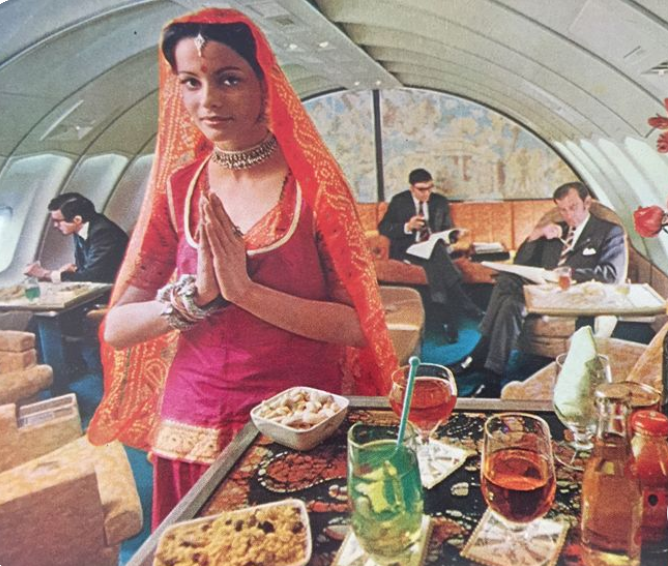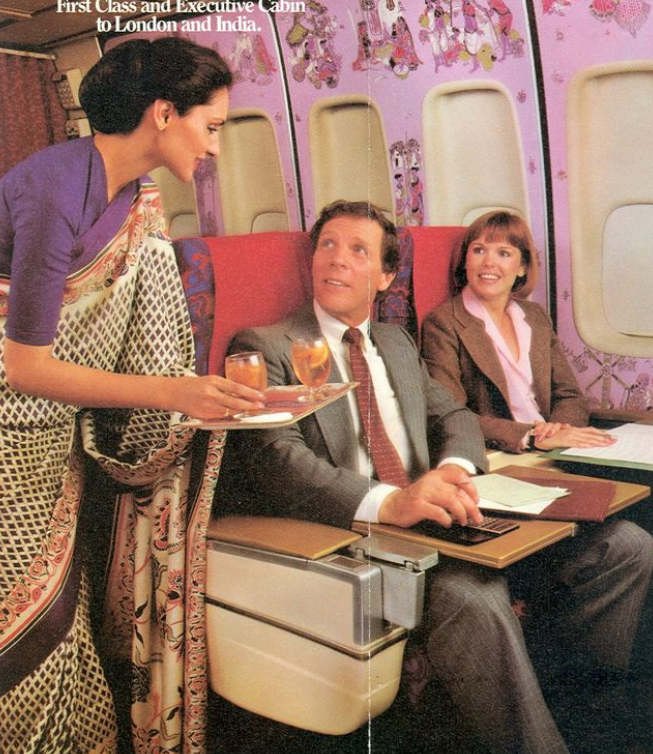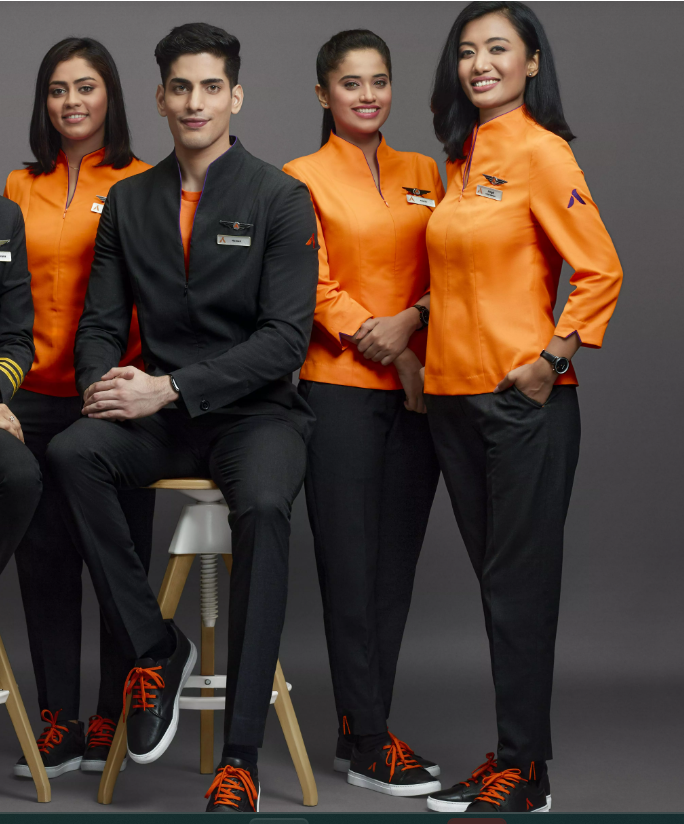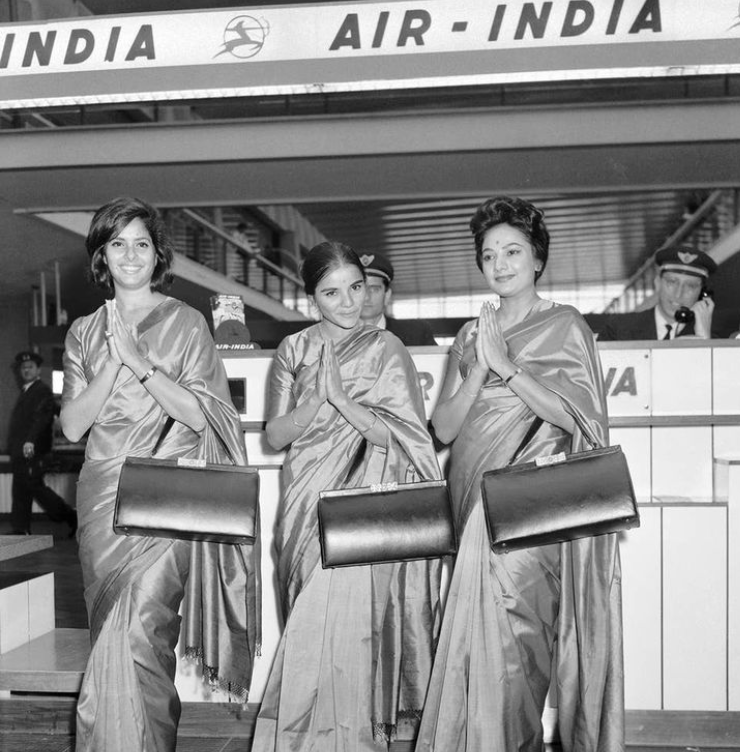The fashion world is dynamic and ever-changing, and while trends evolve across various industries, airline fashion often remains overlooked. Air India, however, stands out as a pioneer in this arena, consistently embodying glitz and glamour. In the 1970s and 80s, the airline’s flight attendants, affectionately known as ‘hawai sundaris,’ donned classic pencil skirts, jackets, and angled caps.

The inception of Air India saw its crew clad in conventional attire, reflecting the standard aviation wardrobe. However, as the 1960s unfolded, a transformative shift occurred, bringing forth the iconic Indian sarees. Introduced with the intention of showcasing a slice of Indian culture in the skies, these sarees became a symbol of elegance and heritage. According to the visionary behind the airline, Tata, who initially named it Tata Airlines, the aim was to captivate customers with the regality of India and offer a glimpse of the enchanting land that drew tourists from around the world.The ladies were dressed in resplendent silk sarees made in government mills to showcase the vast textile heritage of our country in the skies.
It was around the same time that Jumbo jets were introduced with luxury first class lounges for its customers, the air hostesses donned ghagra cholis and maang tikkas in the first class lounges for its customers. Soon, churidars and kurtas entered the diaspora of clothing that one was allowed to wear.
In the 1990s, salwar kameez was introduced with shades of red and blue, these were distinctive eyeball catching costumes that the crew members wore. However, on special occasions for instance when the Prime Minister or President were travelling in the airline, the crew was expected to go back to their original heavy silk sarees.

Western airlines have always had a standard costume set in ways for its airline crew members, but South-east Asian countries and other Middle eastern countries have never shied away from showcasing their culture and roots in the air. Despite gaining much traction in the early years, one cannot deny how cumbersome it may have been to wear a saree throughout a flight and being the perfect hostess for high-end clientele.
Many designers have since been hired by airlines to design unique costumes for their crew members. In 2007, Ritu Beri was appointed by AirIndia to make a new clothing line with a traditional yet modern touch. The tunics, skirts, sarees, scarves, shirts had motifs that are reflected in the Konark sun temple in Odisha. While a renowned designer Pierre Cardin was roped in to design the line for the male crew members.

Airlines such as SpiceJet and Indigo hired designers Rajesh Pratap and Nimish Shah, while Jet Airways asked Sabyasaachi and Ravi Bajaj and Italian designers to design their crew clothing line. There was a shift in many private airlines entering the business as well as a shift in the traditional Indian outfits that some airlines were stuck to, as well as the purely western outfits that some had adhered to. The outlook had changed to a more contemporary look which was chic and casual at the same time. One great example of the same would be the Vistara cabin crew’s look designed by Abraham and Thakore, the female crew donned a co-ord set with gold and purple shades while the men were in lavender shirts and blue trousers and jackets. The look was effortless, comfortable and a great staple for flying.

In recent times, one has seen these airlines prefer comfort over stringent clothing. One such new airline is Akasa Air, they have come up with a unique combination of pairing sneakers with trousers. The uniforms combine comfort, style and sustainability all the while considering the move-able lifestyle of the crew members. The crew has to be agile and quick in their movements and hence demand something that matches those actions.
In recent times, there was news of changing the wardrobe of the AirIndia airline crew once again. Manish Malhotra, the renowned fashion designer has been chosen to design a new cutting edge uniform for the crew. Given the history of the airline, one may expect something bold, yet ethnic to be adopted in the new style curriculum.
The story of airline fashion for Indian crew members encapsulates a fascinating journey through changing times and attitudes. From uniforms that once celebrated the exotic charm of India, the attire now is a harmonious blend of style and comfort. In this sartorial evolution, the uniforms reflect the changing ideologies and aspirations of the aviation industry which is aiming to soar to great heights all the while preserving its rich and diverse heritage.

Contributor





